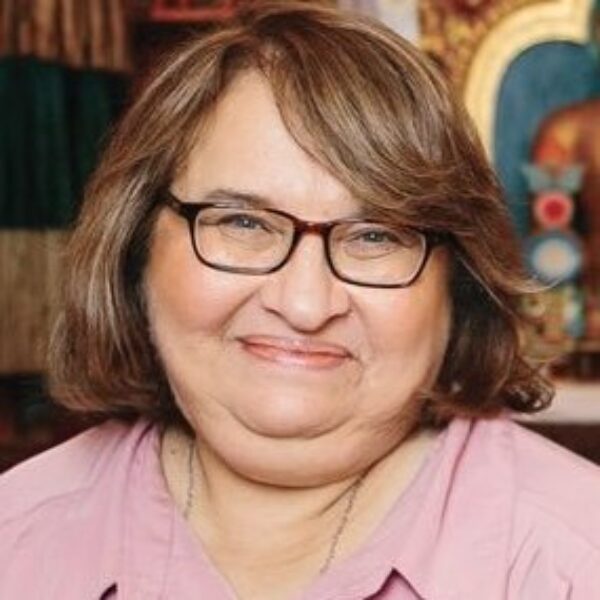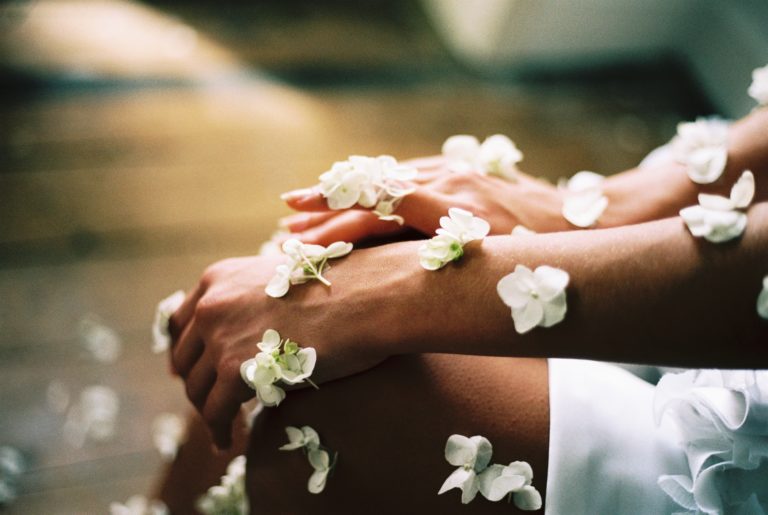
Image by Drew Brayshaw/Flickr, Attribution-NonCommercial.
Empathy Is a Moral Issue
In Buddhist teachings, you will see an image of a feather, held near a flame, curling away from the heat. Traditionally, this image is supposed to represent morality. We are reluctant to be the cause of suffering. We know what suffering feels like, so we recoil from being the cause of harm.
Empathy relies on us being open to our own suffering. We must allow ourselves to feel pain not out of a masochistic desire, but out of a desire to access a more complete perspective — and to learn from it.
Before the wise Dipa Ma was a Buddhist teacher, she experienced multiple experiences of tremendous grief. After marrying her husband in an arranged marriage at age 12, she was unable to bear children. They had fallen deeply in love, however, so he refused to find another wife as his family urged him to. Finally, after 18 years she was able to have children — only to have two of them die. Then, after a few years, her husband suddenly died.
Dipa Ma began meditating after reaching the nadir of her grief, bed-ridden from emotional pain. A doctor came to her and cautioned, “You’re going to die of a broken heart unless you do something about your mind.” So Dipa Ma learned to meditate, and eventually became the teacher I know her to be today. Needless to say, both her processes of grief and healing gave her unwavering wisdom and compassion. She was my biggest model for how to admit terrible pain and transform it into compassion for all. She was therefore my biggest model for how to have a meaningful life.
I often notice that people confuse the words “sympathy” and “empathy,” and there’s good reason for that. Our culture doesn’t do a great job at helping us differentiate the two, nor does it encourage us to feel connection with people other than our close friends and family.
We’re culturally conditioned to express sympathy more than we are empathy — and that leads to confusion about the differences. When we hear another person (usually a loved one) express pain, we are taught to apologize, and maybe to try and help them by giving advice, or encouraging them to “look at the bright side.”
While there’s nothing wrong with sympathy, it does tend to bring with it an implied sense of aversion. When we “feel bad” for someone in pain, we view that person as other. We are separate from that person and his/her suffering, and can position ourselves at a distance. Since sympathy often involves trying to help the person in pain see their situation more positively, it encourages aversion for others, too; we offer solace by suggesting safety in denial or repression.
Empathy, by contrast, is the way we pay attention, which allows us, when we see others suffering, to resonate with their pain. We don’t simply feel bad for them.
In this way, empathy is a moral issue. By paying attention to our experiences with sensitivity, we open our minds and our hearts, and understand how our actions affect others. We know that harming others with words or actions harms ourselves. This knowledge isn’t conceptual and born out of over-analyzing. Rather, it is the result of a focused, inclusive, and balanced way of paying attention. This knowledge is an awareness of our fundamental connectedness.

Years ago, my colleagues at the Insight Meditation Society and I were able to bring our teacher Dipa Ma to the United States for her first visit here. When she arrived, I brought her with me everywhere I’d go on a given day: the bank, the grocery store, the local coffee place. She had been such an influential and important teacher for me, and I wanted to share a “slice of life” experience with her.
It was fun to see how Dipa Ma, who exhibited stable and profound wisdom about the underlying truths of life (e.g. impermanence, the power of compassion, the vulnerability we all face), could be surprised sometimes by encountering our accustomed experiences. And yet she often expressed her inexperience with things like going to a big supermarket in a way that brought with it tremendous insight. Her lack of cultural conditioning allowed her to be open, to recognize connection where most of us might not, and to share her reactions without fear or self-judgment.
One day Dipa Ma, a friend of mine, and I all went out for a walk. My friend needed to get some cash, so we stopped together at an ATM outside of a bank. Dipa Ma and I stood beside my friend as he punched his PIN into the machine, and waited for the cash to come out. When he was ready to go, I looked over at Dipa Ma, expecting her to marvel at the near magical efficiency of the ATM. But, to my surprise, I looked over and saw a saddened expression on her face:
“It’s so sad,” she said. “That poor person who has to sit behind the wall all day long, with no air, no sunlight, and has to pick up people’s cards, count the money, and hand it out.”
We explained to Dipa Ma that the ATM was a machine, and that no person was required to sit behind the wall. Still, I was moved by her feelings of empathy for a person who Dipa Ma not only had never met, but who actually didn’t exist. Dipa Ma’s presence with her experiences was so fine-tuned and filled with compassion that she was immediately able to feel a sense of connection with what she perceived to be another human. “This is what empathy as a default mode looks like,” I remember thinking at the time.
This is not to say we should all get lost in or wrapped up with feelings of intense pain. But we can practice accepting discomfort, rather than turning away from it. We can see things in a fresh way as a result. Above all, we can cultivate the deep knowledge in our hearts that we will try not to harm others. We have felt our pain and can identify it, and we know that we aren’t alone in our suffering.
The most powerful way we can find emotional freedom from self-harming habits, or from habits of harming others, is by recognizing connection. We can be connected to our own feelings — including the “bad” ones — and to, in a way, recognize ourselves in one another. This isn’t magical thinking, or anything fanciful. It’s just what is.


Share your reflection